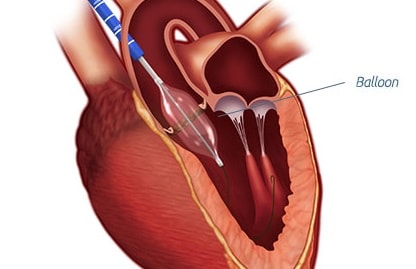Balloon Volvuloplasty
Balloon valvuloplasty (also called valvulotomy or valvotomy) is a procedure that widens a heart valve that is narrowed. The cause of this narrowing in the aortic valve is aortic valve stenosis.
During this procedure, a thin flexible tube called a catheter is inserted through an artery in the groin or arm and threaded into the heart. When the tube reaches the narrowed heart valve, a balloon at the end of the tube is inflated. The balloon widens the valve opening.
During the procedure, you will be awake. But you will receive local anesthesia where the catheter is inserted as well as intravenous (IV) pain medicine along with a sedative to help you relax.
The test is performed for a variety of reasons :

There are four valves in the heart—the aortic valve, pulmonary valve, mitral valve, and tricuspid valve—each at the exit of one of the heart’s four chambers. These valves open and close to regulate the blood flow from one chamber to the next and are vital to the efficient functioning of the heart and circulatory system. Balloon valvuloplasty is used primarily to treat pulmonary, mitral, and aortic valves when narrowing is present

